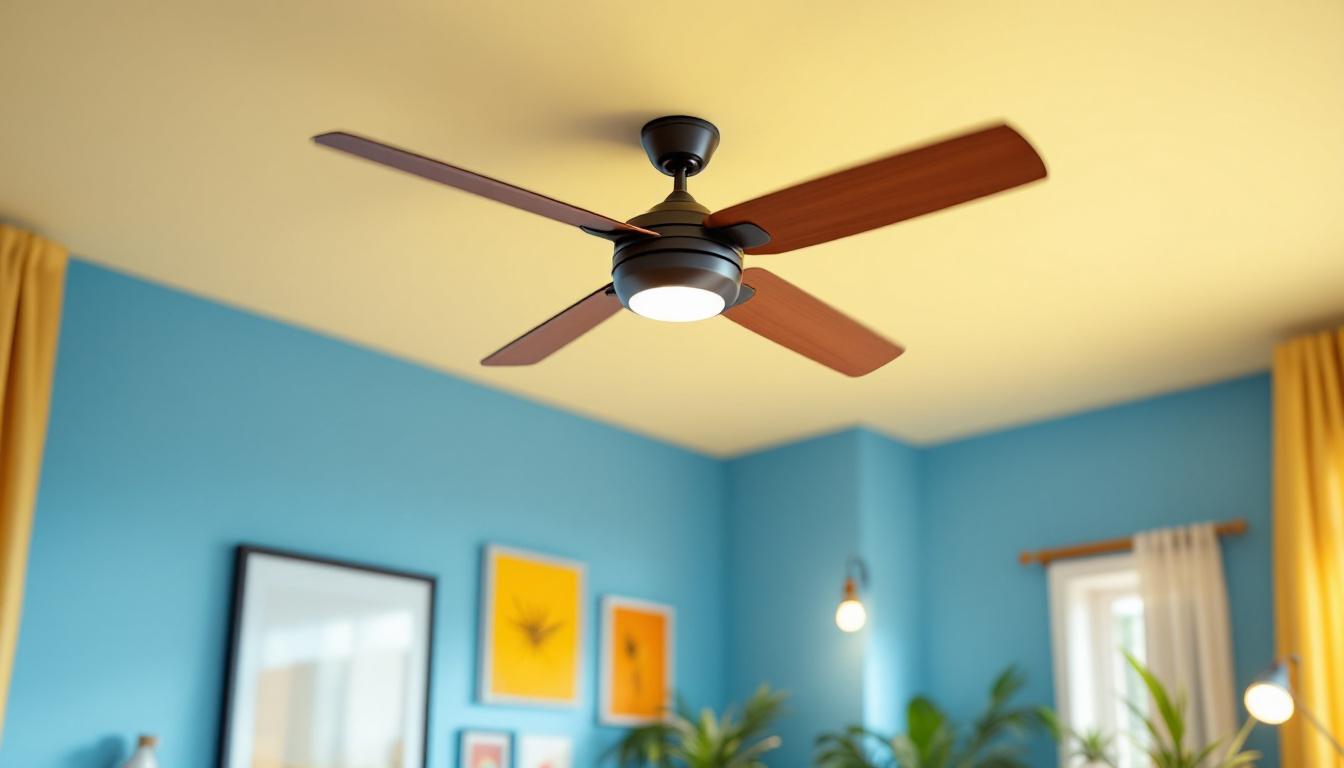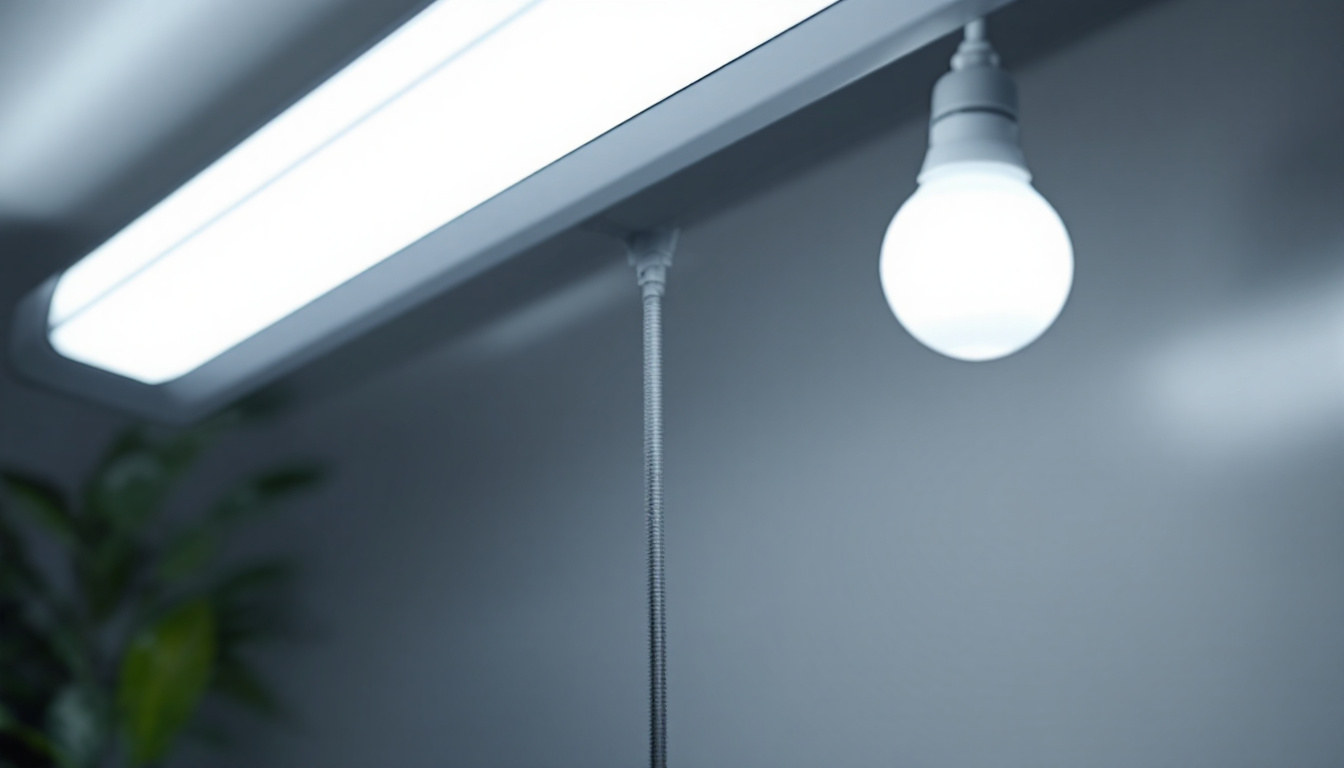
In the realm of interior design and functionality, ceiling fans have long been a staple in enhancing comfort and aesthetics. However, the traditional installation of ceiling fans on ceilings is evolving, with wall-mounted options gaining traction. For lighting contractors, understanding the nuances of wall-mounted ceiling fans is essential. This article will explore the benefits, installation considerations, and best practices for integrating wall-mounted ceiling fans into various spaces.
Wall-mounted ceiling fans are designed to provide airflow and comfort in areas where traditional ceiling fan installation may not be feasible or desirable. These fans are typically mounted high on a wall, allowing for effective air circulation without the need for ceiling space. This section will delve into the mechanics and advantages of wall-mounted ceiling fans.
Wall-mounted ceiling fans operate similarly to their ceiling-mounted counterparts, utilizing blades to create airflow. However, their installation height and angle can influence performance. These fans are often designed with specific features to optimize airflow, such as adjustable blade angles and powerful motors.
It is crucial for contractors to understand the mechanics of these fans to ensure they select the appropriate model for each installation. Factors such as blade pitch, motor type, and fan size can significantly impact the effectiveness of air circulation in a given space. Additionally, many wall-mounted fans come equipped with remote controls or wall switches, allowing users to easily adjust settings without needing to reach high up. This convenience can enhance user experience, especially in spaces where accessibility is a concern, making it a practical choice for homes and businesses alike.
One of the primary advantages of wall-mounted ceiling fans is their versatility. They can be installed in spaces with low ceilings, where traditional ceiling fans would be impractical. Additionally, wall-mounted fans can be a stylish addition to modern design aesthetics, offering a sleek and contemporary look.
Moreover, wall-mounted ceiling fans can be particularly beneficial in areas with limited airflow, such as narrow hallways, small rooms, or outdoor patios. They provide a cost-effective solution for improving comfort without the need for extensive renovations. Beyond their functional benefits, these fans can also contribute to energy savings. By circulating air effectively, they can reduce the reliance on air conditioning systems, leading to lower energy bills. Furthermore, many modern wall-mounted fans are designed with energy-efficient motors, which not only enhance performance but also minimize environmental impact. This makes them an eco-friendly option for homeowners looking to maintain comfort while being mindful of energy consumption.
Installing wall-mounted ceiling fans requires careful planning and execution. Lighting contractors must consider various factors to ensure a successful installation that meets both aesthetic and functional needs. This section will outline the key considerations to keep in mind during the installation process.
The location of the wall-mounted fan is critical. It should be installed in an area where it can effectively circulate air without obstructing furniture or other fixtures. Ideally, the fan should be mounted at a height that allows for optimal airflow while remaining safe and accessible.
Contractors should also consider the room’s layout and design. For example, in a large room, multiple wall-mounted fans may be necessary to achieve even air distribution. Conversely, in smaller spaces, a single fan may suffice. Understanding the specific needs of each room will guide the installation process. Furthermore, the aesthetic appeal plays a significant role; selecting a fan that complements the room’s decor can enhance the overall ambiance. For instance, a sleek, modern fan may be ideal for a contemporary space, while a vintage-style fan might be more suitable for a rustic or traditional room.
Proper electrical setup is essential for the safe operation of wall-mounted ceiling fans. Contractors must ensure that the electrical wiring can support the fan’s power requirements. This includes assessing the circuit capacity and ensuring that the fan is connected to a dedicated circuit if necessary.
Additionally, it is important to consider the type of switch and control mechanisms that will be used. Wall-mounted fans can be operated through standard wall switches, remote controls, or smart home systems. Selecting the appropriate control method can enhance user convenience and functionality. For instance, integrating the fan with a smart home system allows users to control the fan remotely via smartphone apps, providing flexibility and ease of use. Moreover, some modern fans come equipped with energy-efficient motors and features like variable speed settings, which can help reduce energy consumption while maximizing comfort.
Adhering to local building codes and regulations is paramount when installing wall-mounted ceiling fans. Contractors should familiarize themselves with the specific requirements in their area, including electrical standards and safety guidelines. This ensures that the installation is not only efficient but also compliant with legal standards.
Failure to comply with building codes can result in safety hazards and costly fines, making it essential for contractors to stay informed and diligent throughout the installation process. Additionally, obtaining the necessary permits before installation can help avoid complications down the line. It’s also wise for contractors to document the installation process thoroughly, including any modifications made to the electrical system, as this can be beneficial for future inspections or renovations. By prioritizing compliance and thorough documentation, contractors can ensure a smooth installation that meets all safety and regulatory standards.
With a variety of wall-mounted ceiling fans available on the market, selecting the right model for a specific installation can be challenging. This section will provide guidance on how lighting contractors can choose the most suitable fan for their projects.
The size of the fan is a critical factor in its performance. Contractors should consider the room’s dimensions when selecting a fan. Generally, larger rooms will require larger fans with longer blades to ensure adequate airflow. Conversely, smaller rooms can benefit from compact fans that fit seamlessly into the space.
Blade design also plays a significant role in airflow efficiency. Fans with wider blades tend to move more air, while those with narrower blades may be more aesthetically pleasing but less effective. Contractors should weigh the balance between design and functionality to meet the needs of their clients.
The quality of the fan’s motor is crucial for long-term performance and reliability. High-quality motors tend to be more energy-efficient and operate more quietly, enhancing the overall user experience. Contractors should look for fans equipped with DC motors, which are known for their efficiency and quiet operation.
Noise levels can be a significant concern for clients, especially in residential settings. It is advisable for contractors to test fans for noise levels before installation, ensuring they meet the client’s expectations for a peaceful environment.
In addition to functionality, the aesthetic appeal of wall-mounted ceiling fans should not be overlooked. These fans come in various styles, finishes, and colors, allowing contractors to choose options that complement the room’s decor.
From sleek modern designs to more traditional styles, the right fan can enhance the overall ambiance of the space. Contractors should consider the client’s preferences and the existing design elements when making their selection.
Once installed, wall-mounted ceiling fans require regular maintenance to ensure optimal performance and longevity. This section will outline essential maintenance practices that lighting contractors should recommend to their clients.
Dust and debris can accumulate on the blades and motor of wall-mounted ceiling fans, impacting their efficiency and airflow. Regular cleaning is essential to maintain performance. Contractors should advise clients to clean the fan blades with a soft cloth or duster to remove dust and prevent buildup.
Additionally, the motor and other components should be inspected periodically for any signs of wear or damage. A well-maintained fan will not only operate more efficiently but also have a longer lifespan, providing value to the client.
Many wall-mounted ceiling fans require periodic lubrication to ensure smooth operation. Contractors should recommend the appropriate lubricant for the specific fan model and advise clients on how to apply it safely.
Monitoring the motor for unusual noises or performance issues is also crucial. If a fan begins to wobble or make strange sounds, it may indicate a problem that requires professional attention. Contractors should encourage clients to report any concerns promptly to avoid more significant issues down the line.
Wall-mounted ceiling fans can be used year-round, but their effectiveness can vary with the seasons. Many fans come equipped with a reverse function, allowing the blades to spin in different directions. During warmer months, fans should rotate counterclockwise to create a cooling breeze. In colder months, reversing the direction can help circulate warm air trapped near the ceiling.
Contractors should educate clients on how to adjust the fan settings according to the seasons, maximizing comfort and energy efficiency throughout the year.
As interior design trends evolve, wall-mounted ceiling fans are becoming an increasingly popular choice for both residential and commercial spaces. For lighting contractors, understanding the intricacies of these fans is essential for successful installations that meet client needs.
From selecting the right fan to ensuring proper installation and maintenance, contractors play a vital role in the integration of wall-mounted ceiling fans into modern design. By staying informed about the latest trends and technologies, lighting contractors can provide valuable insights and services that enhance the comfort and aesthetics of any space.
Ultimately, embracing wall-mounted ceiling fans can lead to improved airflow, energy efficiency, and client satisfaction. As the demand for innovative solutions continues to grow, lighting contractors who adapt to these changes will position themselves as leaders in the industry.
Ready to elevate your lighting projects with the latest in wall-mounted ceiling fan technology? Look no further than LumenWholesale, where we offer an exceptional range of high-quality, spec-grade lighting products tailored to your needs. Our commitment to providing superior lighting solutions at wholesale prices means you can enhance your installations with confidence and cost-efficiency. Say goodbye to middleman markups and hello to free shipping on bulk orders, ensuring you get the best value every time. Don’t compromise on quality or price; choose LumenWholesale for your next project. Wholesale Lighting at the Best Value is just a click away.

Discover the step-by-step process to transform your home or office lighting by switching from fluorescent to LED.

Discover essential tips and expert insights for lighting contractors to master basic light fixture installations.

Explore the pros and cons of dim switches versus alternative lighting solutions in this comprehensive guide for lighting contractors.

Discover the key factors that distinguish top lighting contractors when it comes to fluorescent tube LED replacements.